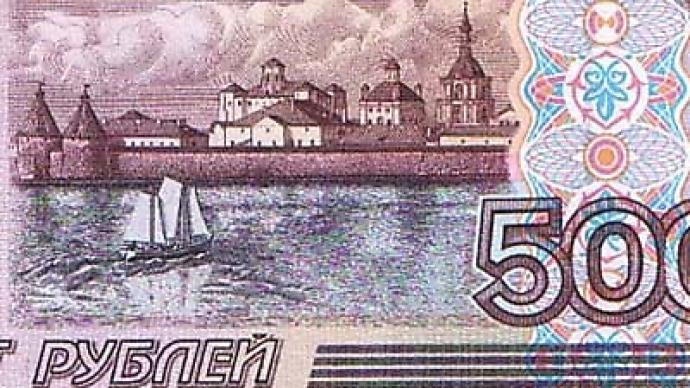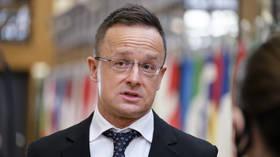Outlook on the rouble 2011

The Russian rouble had a generally subdued 2010. Capital outflows, easing interest rates throughout much of the year, and a less overt presence by the central bank of Russia all played a role.
The Russian currency traded within a range of 30-32 against the US dollar with volatility in Europe meaning it moved considerably more against the euro from 42 at the start of the year, as low as 37.5 in May as the Greek bailout crisis unfolded, and then back towards 41 later in the year.This came as major commodity currencies including the Australian, Canadian and New Zealand dollars, as well as the Chilean peso and South African rand all climbed aboard surging commodity prices to nudge all time highs against both the greenback and the euro.Ivan Chakarov, Chief Economist for Russia and CIS countries at Bank of America Merrill Lynch, believes the relative weakness of the rouble during the second half of 2010 stemmed from three key factors.“Underperformance of the rouble, particularly in 3Q of2010, was one of the key macroeconomic events. And this event was more interesting not in itself but taken the background of what was happening in the world, with many other emerging economies having difficulties with preventing their currencies from appreciating, while at the same time there was so much pressure on Rouble to depreciate. In our opinion, there is a number of reasons why the rouble underperformed in 2010. First, many Russian banks and companies had to meet the peak of the external redemption in December, so that these banks and corporates were actually accumulating net foreign assets. In other words, they were buying dollars in September, October and November in anticipation of this peak redemption. Second, the rouble’s weakness in FX market coincided with the change of the monetary policy paradigmof the Central Bank. In particular, the Central Bank was widening the rouble corridor and it was making its presence in the FX market much less transparent. I think, this created a lot of difficulties for many market players to anticipate what the Central Bank is doing. And reason number 3, was a significant reduction of the trade balance and the current account balance of the Russian Federation that we’ve seen over the course of 2010 and that, I think, has also affected the rouble negatively.”Julia Tseplyaeva, chief economist for Russia and CIS countries at BNP Paribas, saw a further factor in the departure of former Moscow mayor Yuri Luzhkov in September as contributing to rouble underperformance. “High oil prices that strengthened Russia’s balance of payments mostly provided for a strong rouble during 2010.In fact, the expectations were of even a higher rouble, but the outflow of capital that started in the 2H 2010 and will reach about $23 – 25 billion for a year stopped the tendency.Russia’s currency performed the worst among most of other commodity dependent countries. I think, that were mostly political reasons that made foreign investors leave Russian market – namely the appointment of a new Moscow mayor. That was really important, as Moscow alone provides for about 25% of the whole Russia’s GDP. And if we look at this historically, any elections were always coupled by the outflow of capital.””Anton Stroutchenevski, senior economist at Troika Dialog, said a retracement from the capital inflow during 1H 2010 and relative absence of government or central bank action to bolster it “The inflow of foreign capital in 1H 2010 strengthened Russian rouble against the bi – currency basket, which made a correcting devaluation necessary. And the market did that itself and slowed down the pace of rouble strengthening in real terms, with neither the Government nor Central bank of Russia interfering too much.”Heading into 2011 Chakarov from Bank of America Merrill Lynch believes the pressure on the Russian currency will abate, and with oil prices edging higher he sees upside for the rouble. “We think, that going into 2011 many of the mentioned factors will gradually fall away. We think that the short term increase in external payments in December will disappear at the end of December and the external redemption schedule of the Russian Federation looks much easier in the first 2 quarters of 2011. Second, market participants are getting much more used to what the Central Bank is doing and, I think, it’s clear today that the CBR is moving away from targeting the exchange rate and it’s becoming much more serious on targeting inflation. And finally, for our forecast, with the oil prices going higher in 2011, we think, that exports will do considerably better in Russia in 2011. And we think, that the kind of import surge, that we observed during this year, will not ease in 2011. So, a combination of these 3 reasons argue for a stronger rouble in 2011. Talking in particular numbers, we think that rouble will strengthen against the basket to 34 until June 2011. So, we do prefer the rouble a lot, and this particular trend with the rouble being longer against the basket will be one of the top traits globally in 2011.”Julia Tseplyaeva is also seeing a stronger rouble in the coming year, largely on he back of currency inflows replacing the outflows of 2010.“I think, that Russia’s currency will get a bit stronger in 2011 and reach about 28 – 29 roubles per dollar, as boththe oil market and the balance of payments will perform well. A political factor will no longer be there and the inflow of capital, that I expect to be at about $30 billion in 2011, will replace its outflow this year.”More gloomy about the rouble outlook is Troika Dialog’s Anton Stroutchenevski who says it could weaken with inflation and the increasingly hands off management role of the central bank playing a part.“I don’t expect any sharp changes of the rouble rate in 2010. I think, it can only lose some value and go down to 32 roubles per American dollar. Generally speaking, the rouble dynamics will of course depend on the inflation next year and will mostly free float. CBR will certainly try to soften fluctuations, but in fact it doesn’t have any strong instruments at its disposal. The Bank can influence any significantly the rouble only if it can increase its gold value reserves. At the moment it doesn’t have such an opportunity. ”Tseplyaeva also sees the rouble moving closer to becoming free floating in the coming year.“I think, that the next year rouble will come closer to free floating, with the Central bank of Russia almost not interfering in the market.”












